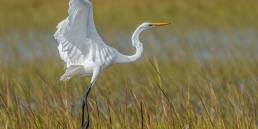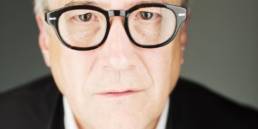WORKSHOP

March 12th
10a – 10p
Join us for a full day of shooting at Andalusia, Flannery O’Connor’s farm outside of Atlanta, with noted photographer Mark Steinmetz. Lunch will be served on the grounds while we discuss the morning’s shoot and plan for the afternoon’s.
At 5p please join us down the road at 3Cent Farm for cocktails, dinner, viewing the day’s images, photo talk, and relaxation.
Space is limited.
$375 includes admission to Andalusia, all-day workshop, lunch, cocktails, and dinner at 3Cent Farm.
PORTFOLIO REVIEWS
March 11, 2016
1-5p
Friday afternoon Mark Steinmetz will conduct a limited number of portfolio reviews at the Old Country Store, 3Cent Farm, outside of Milledgeville, Georgia.
Space is limited.
$75
Photographers must be attending the Saturday workshop the following day.
MARK STEINMETZ

Mark Steinmetz received his MFA from Yale University in 1986. He is a Guggenheim Fellow whose work is in the collections of the Museum of Modern Art, Whitney Museum of American Art, Museum of Fine Arts, Houston, and the Bibliothéque Nationale, Paris, among others. Among his 11 published books are The Players, South East, Greater Atlanta, Paris in my time, and the soon-to-be-released Angel City West. We encourage you to visit his website.
How to Start a Project
People want to feel like they are in control. Often, before even starting something new, people try to determine by various means how their project will turn out. It’s important, I believe, not to get ahead of things but to simply allow the outcome to unfold naturally. Trying to decide too soon what results you want will lead to rigidity and lack of surprise.
Also – people like to justify to themselves that the work they are doing is valid and it seems natural to use words to tell yourself that what you are doing is important and meaningful. But it’s important to not to too narrowly define what you’re doing through the use of language. People want to feel like they have a grip on things and so using words to make sense of what you’re doing might provide a feeling of relief and control but be careful you don’t make your project less interesting by having it fit neatly into a scheme of words. Images have a power that is different from the power of words and they communicate in ways that words cannot. In today’s culture, words dominate our thinking and, used in a lazy manner, they help sustain a spectrum of fundamentalist thought. Being able to accept ambiguity leads to a better quality of life and better work.
Garry Winogrand was taking his kids to the zoo while he was going through a difficult divorce. He took pictures, realized he was on to something, and eventually produced The Animals. One afternoon I heard a bat strike a baseball – that sharp crack – and I turned and saw a Little League game and I knew in an instant I would do a body of work on the subject (which will be published next year – The Players). In some ways it was part of a natural progression from what I had been working on but I experienced my realization in one forceful moment. When I moved from Chicago to Knoxville to accept a temporary teaching assignment I very soon had a strong feeling/image for the work I would do there – it was a mixture of vision and intuitive knowing – but I could find no words that might helpfully explain to others or to myself what I was doing – this work would become the book South Central.
It’s important to be cultivated. In my opinion, reading and considering great literature is the best way to do this, but there are many ways to deepen your understandings and your capacity to feel and notice. If you are cultivating yourself, the chances are greater that the work you end up doing will be worth doing as far as others are concerned. It’s best not to ask how your work will be received by the world or how it might boost your reputation. Just stay close to your own guidance and see what comes. Be authentic and natural – it sounds easy enough but it actually takes some discipline and courage. If you are able to quiet yourself and be honest with yourself, then it will be easier for you to embark on a project that truly excites you and rewards you.
—Mark Steinmetz
as published in fototazo, 9.20.2013
ANDALUSIA
Andalusia is the name of Southern American author Flannery O’Connor‘s rural Georgia estate. The estate is located in Baldwin County, Georgia, approximately 4 miles (6.4 km) northwest of Milledgeville. It comprises 544 acres (2.20 km2), including the house where O’Connor wrote some of her last and best-known fiction.
The land on which Andalusia was first built had in the mid-19th century been a working plantation of between 1,500 and 1,700 acres owned and operated by Joseph and Mary “Polly” Stovall. After Polly Stovall’s death, the estate was purchased at a public auction by sometime mayor of Milledgveille, Nathan Hawkins, and later sold to Col. Thomas Johnson of Kentucky in 1870.
In 1951, Flannery O’Connor returned to her home state of Georgia, where she had grown up, after being diagnosed with a form of lupus. She first lived in the family home of her mother, Regina, on Greene Street in Milledgeville, then owned by her uncles Louis and Bernard Cline. There, she finished her manuscript for her novel Wise Blood and, with her health improving, she moved with her mother to Andalusia, then still a working farm. She had visited the home every summer in her childhood. Her mother had jointly inherited the 544-acre property along with her brother Louis Cline from their uncle.
-Wikipedia
The estate is composed of gently rolling hills divided into a farm complex, hayfields, pasture, man-made and natural ponds, and forests. Tobler Creek, a spring fed waterway, intersects the property entering near the west corner and meandering down to exit at the middle of the southeast boundary.
The farm complex at Andalusia consists of the main house, a peafowl aviary, Jack & Louise Hill’s House, the main cow barn, an equipment shed, the milk-processing shed, an additional smaller barn, a parking garage (also called the Nail House), a water tower, a small storage house (formerly a well house), a horse stable, a pump house, and three tenant houses.
The Main House is a circa 1850s white two-story, Plantation Plain style structure with a red metal roof and several additions, including a three-room extension on the north corner of the house. These additions were present when Flannery O’Connor occupied the house. The three-room extension was, in fact, added for additional space in 1959 while O’Connor was living there.
The Hills’ House is a modified mid-19th century plantation type cottage. It is smaller and simpler in detail than the Main House and features two front entrances. Robert “Jack” and Louise Hill, resident farmers at Andalusia, lived in this house. Formerly located in the crescent of the driveway nearer the Main House, it was moved to its current location, approximately 225 feet to the northwest of the Main House, in the late 1940s. O’Connor refers to the Hills, along with their boarder Willie “Shot” Manson, with humor and affection on several occasions in her letters.
Andalusia has the potential to be one of the most important literary landmarks in the country because it is more than just a place where an author penned her fiction. It is a place that very clearly inspired so much of that fiction. Andalusia appeals to readers, scholars, nature lovers, and history buffs.
-museumsusa.org






